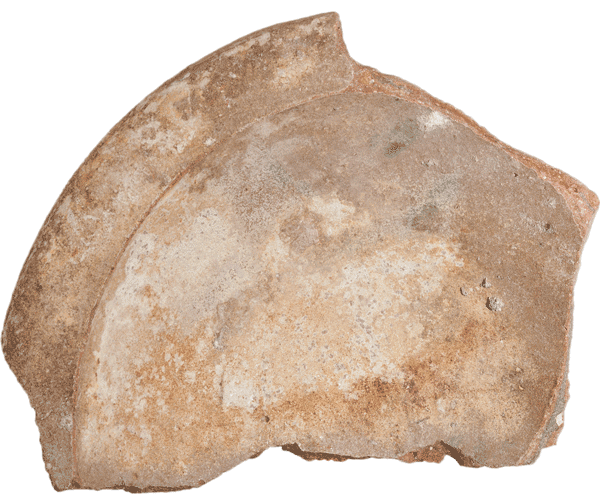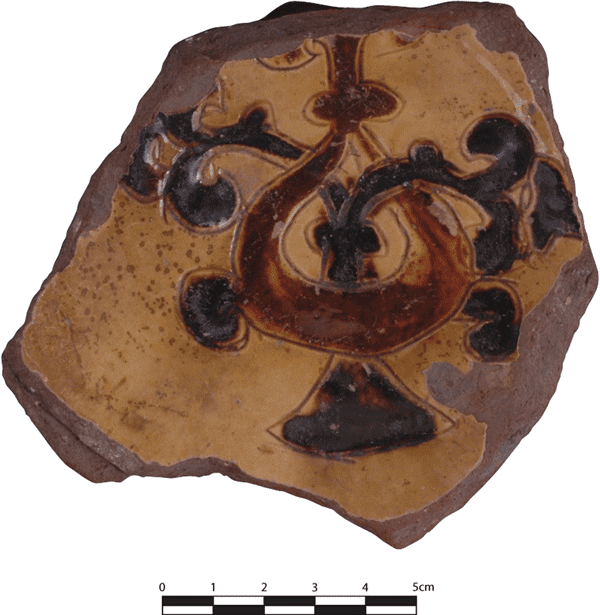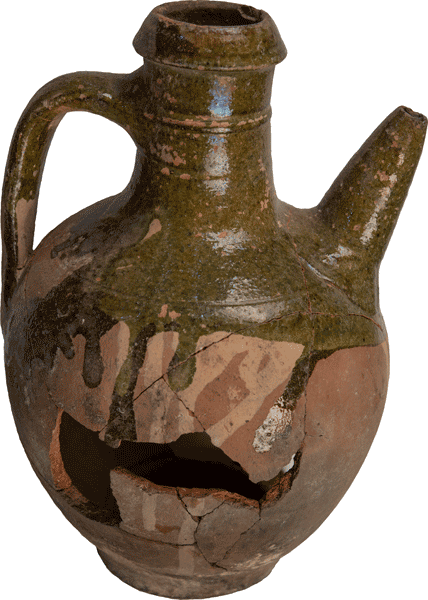Medieval and Ottoman ceramics in Alexandria
Team leader : Delphine Dixneuf
The first studies of medieval ceramics in Alexandria were based on material discovered on the site of Kom el-Dikka during archaeological excavations carried out in 1947-1948 by Alan J.B. Wace under the auspices of the Alexandria University’s Faculty of Arts. The main aim of this research was to gain a better understanding of the formation and evolution of the hill of Kom el-Dikka over the centuries. Some of the ceramics unearthed, in particular three inscribed vases from the Mamluk sgraffito family, were first published by Mohamed A. Marzouk in 1957, and a second publication, dealing more generally with sgraffito ware, appeared in 1959.
The study of medieval and Ottoman ceramics in Alexandria also owes much to the work of Véronique François (CNRS, AMU/LA3M) on material discovered at Kom el-Dikka and Kom el-Nadoura during research at the end of the 1980s by the Supreme Council of Egyptian Antiquities, as well as material from the former Majestic Cinema unearthed during a CEAlex salvage excavation on the presumed site of the Caesareum. These studies highlight commercial links between Alexandria and the rest of the Mediterranean, as well as with the Far East, and the vitality of these exchanges, as demonstrated by the many categories of ceramics that were found. However, common ware for everyday use was not tackled and it remains largely unknown. More recently, a team from the Laboratoire d’archéologie médiévale et moderne en Méditerranée (CNRS, AMU/LA3M) has published a study of a group of ceramics from the Early Ottoman Period discovered in the backfill of cisterns excavated on the Fouad site, of the former Greek Orthodox Patriarchate. Lastly, archaeological research by the Polish team at Kom el-Dikka has also added to our knowledge of local imports and production in Alexandria during the Medieval Period.

It is in this context that the CEAlex has, since 2009, intensified and promoted research into medieval and Ottoman ceramics in Alexandria. Delphine Dixneuf has focused on studying ceramics discovered during archaeological excavations in the immediate vicinity of El-Nabih cistern. These excavations yielded a large batch of medieval pottery, particularly from the Ayyubid and Mamluk and Late Ottoman period. Especially during the medieval period, it is possible to identify the production of common ware and vessels covered in a green to brown lead glaze, which has often turned yellow over time (Fig. 1). From the appearance of the clay, this calcareous or alluvial tending to calcareous pottery seems to have been produced in the region close to Alexandria and perhaps in the Mareotid. Physico-chemical and petrographic analyses of samples of El-Nabih ceramics, currently being conducted by the CEAlex materials characterisation laboratory, will perhaps reveal a little more about the origins of these products and the chemical composition of their clay.
Delphine Dixneuf and Heba Mahmoud Saad Abdel Naby have also published, in English and Arabic, part of the rich collection of medieval ceramics held in the museum of Alexandria University’s Faculty of Arts, with a view to promoting Islamic collections. These examples are mainly luxury glazed ceramics, often imported during the Fatimid to Mamluk periods (Fig. 2), some of which came from excavations carried out in Fustat at the beginning of the 20th century.

Since 2015, the study of medieval and Ottoman ceramics in Alexandria has benefitted from an agreement between the CEAlex and the LA3M, The aim is to provide a repertory of these ceramics and to shed light on a part of Alexandria’s economic history through local production and imports. This research is based primarily on the analysis of ceramics discovered in the fort built by Sultan Ashraf Qaitbay on the site of the famous Lighthouse of Alexandria at the end of the Mamluk period. This fort has experienced numerous alterations over the course of its history, right up to the modern era, and the ceramics attest to the importance of commercial links between Alexandria and the rest of the Mediterranean (Fig. 3). A new category of objects, tobacco pipes, which appeared in the 16th century, is also the subject of research, with over 500 unearthed in CEAlex excavations.The Fouad site has also provided a large corpus of medieval and Ottoman ceramics, some of which were studied by a number of specialists some 15 years ago. However, a comprehensive study of the material remains to be carried out and should be tackled in the coming years. The Tabiyet Nahassin archaeological survey carried out in 2019 also yielded a large quantity of material, which will now be studied.

